Futures point higher; AMD reports; Novo to cut costs - what’s moving markets
Introduction & Market Context
Progressive Corporation (NYSE:PGR) presented its Q2 2025 investor relations slides on August 5, 2025, highlighting strong first-half performance across key metrics. Despite the company’s shares trading down 0.45% in pre-market to $240.49, the presentation emphasized Progressive’s continued outperformance relative to the insurance industry, particularly in combined ratios and premium growth.
The presentation comes after Progressive reported mixed Q1 2025 results in which the company missed EPS expectations ($4.37 vs. $4.74 forecast) but exceeded revenue projections ($22.21 billion vs. $21.6 billion forecast). The stock has been trading near its 52-week range of $212.27 to $292.99.
Performance Highlights
Progressive reported impressive first-half 2025 results, with a combined ratio of 86.1, representing a 3.0 percentage point improvement year-over-year. Net written premiums increased by $5.4 billion, a 14.7% gain compared to the first half of 2024. The company also added 2.4 million policies in force during the first half of 2025, representing 6.7% growth since December 2024.
As shown in the following chart of key first-half metrics:

The presentation emphasized Progressive’s outperformance relative to the industry in personal auto insurance. Using data from S&P Market Intelligence, Progressive demonstrated superior combined ratios and stronger direct written premium growth compared to other top 10 carriers.
The following chart illustrates Progressive’s personal auto combined ratio performance versus the industry over a 30-year period:
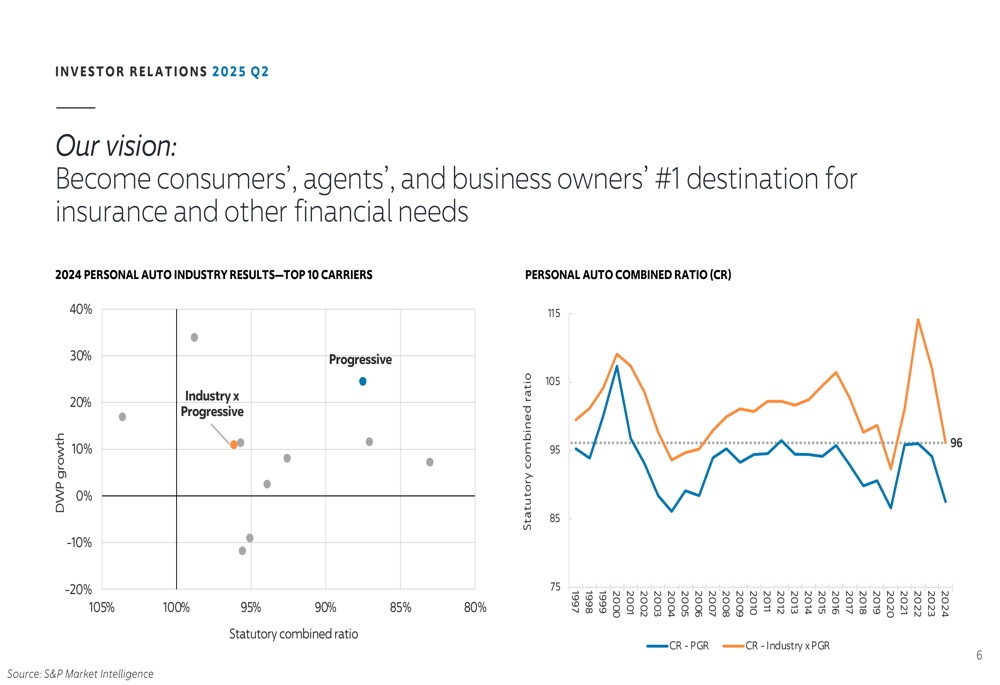
Similarly, in the commercial auto segment, Progressive highlighted its consistent outperformance over more than 25 years:
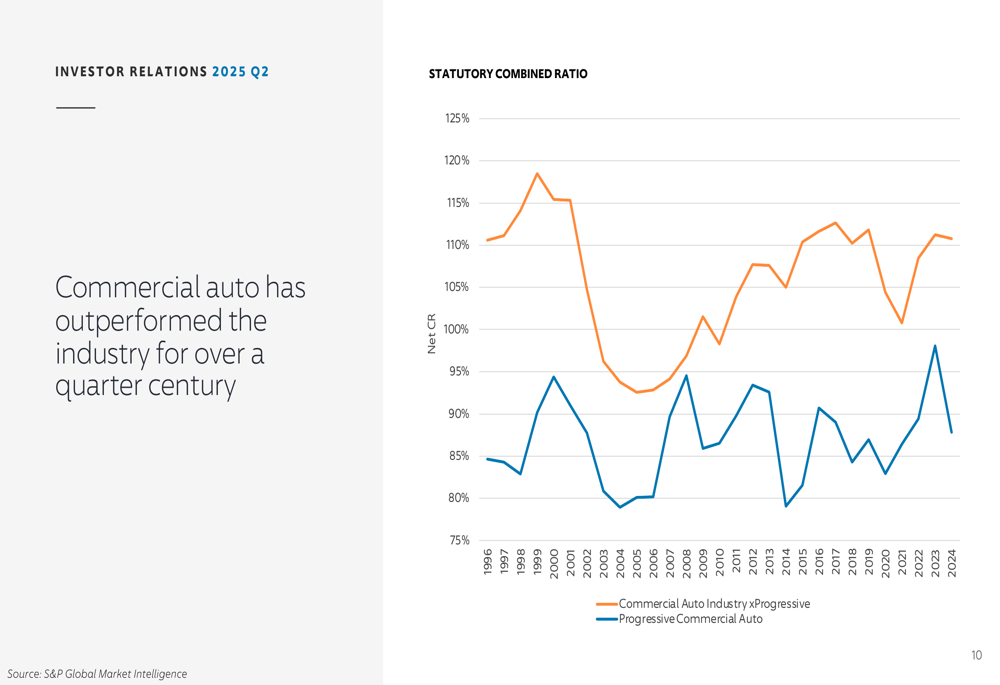
Strategic Initiatives
Progressive outlined four strategic pillars driving its business approach:
1. People and Culture: Described as the company’s "most powerful source of competitive advantage"
2. Broad Needs: Meeting customers’ broader insurance needs throughout their lifetimes
3. Leading Brand: Maintaining a recognized brand supported by experiences that instill confidence
4. Competitive Prices: Offering competitive rates through industry-leading segmentation, claims accuracy, and operational efficiency
A notable strategic initiative has been Progressive’s significant increase in marketing investment. The company reported that its first-half 2025 advertising spend reached approximately $2.4 billion, the highest in the company’s history and a substantial increase from approximately $1.7 billion in 2024.
The following chart shows Progressive’s advertising spend trajectory over the past seven years:
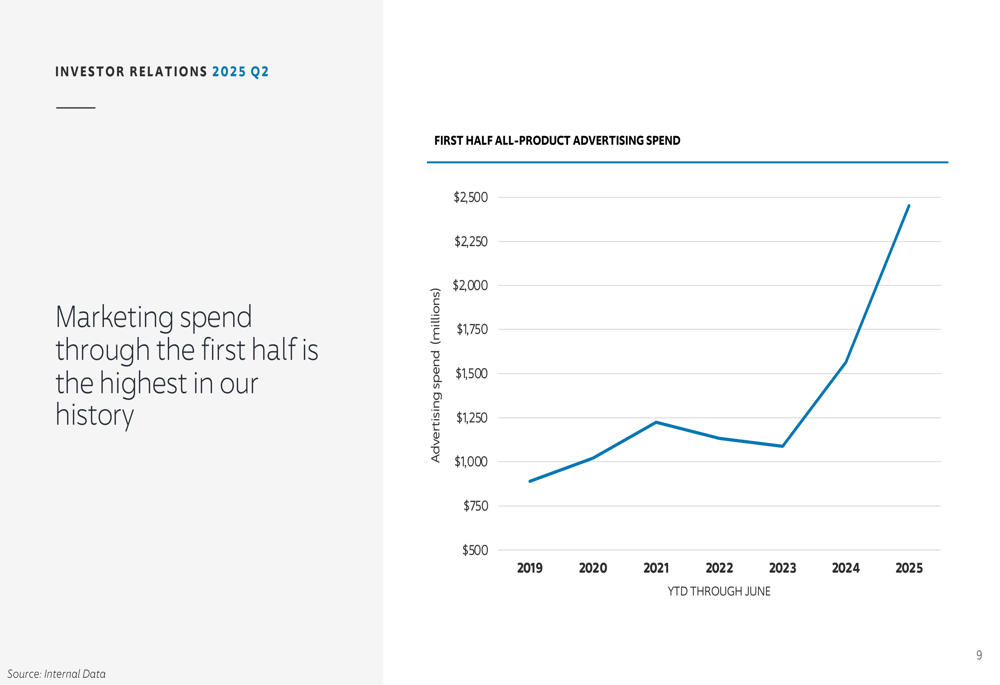
This aggressive marketing approach aligns with CEO Tricia Griffith’s statement from the Q1 earnings call that "Through it all, Progressive has not merely survived, but thrived." The increased marketing spend appears designed to capitalize on the company’s strong operational performance to drive further growth.
Detailed Financial Analysis
A significant portion of the presentation focused on Progressive’s pricing methodology, which the company positions as a key competitive advantage. The presentation detailed how Progressive balances accuracy and precision in its actuarial approach to pricing insurance products.
The following diagram illustrates this concept:
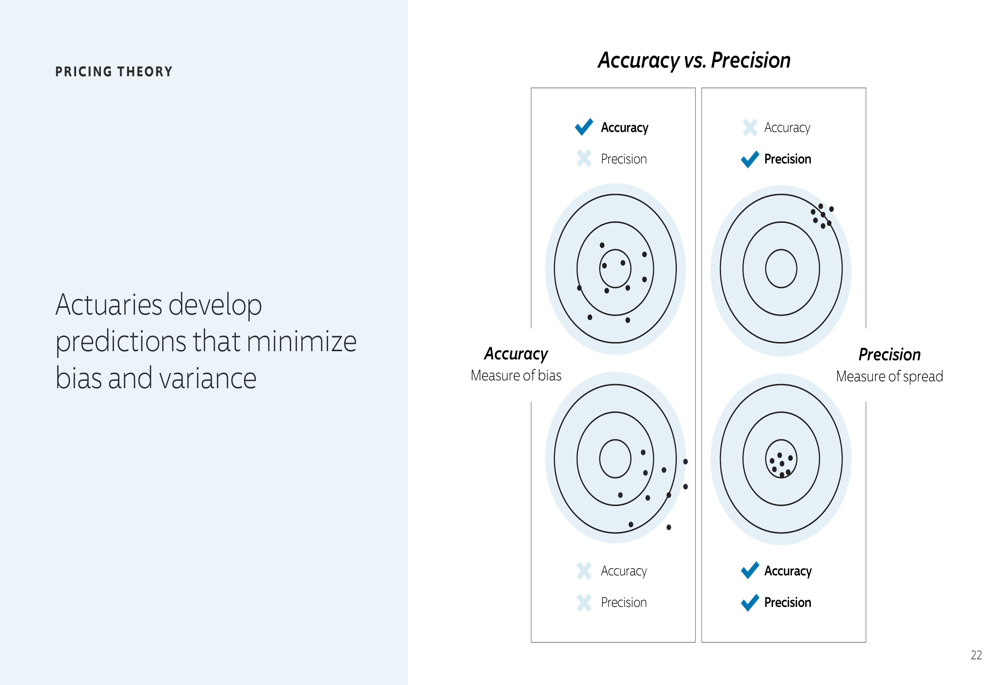
Progressive emphasized its ability to make frequent pricing updates as a competitive advantage. In personal auto, the company updates rates 3-4 times per year across 51 jurisdictions (all states plus Washington D.C.), two channels (agency and direct), and 12-15 different coverages depending on the state.
The company’s operational goal was clearly stated: "Grow as fast as you can at or below a 96 combined ratio." This target balances growth with profitability, and the first-half 2025 combined ratio of 86.1 indicates the company is currently exceeding this profitability target.
Competitive Industry Position
Progressive’s presentation highlighted its rate-making process as a key differentiator in the market:
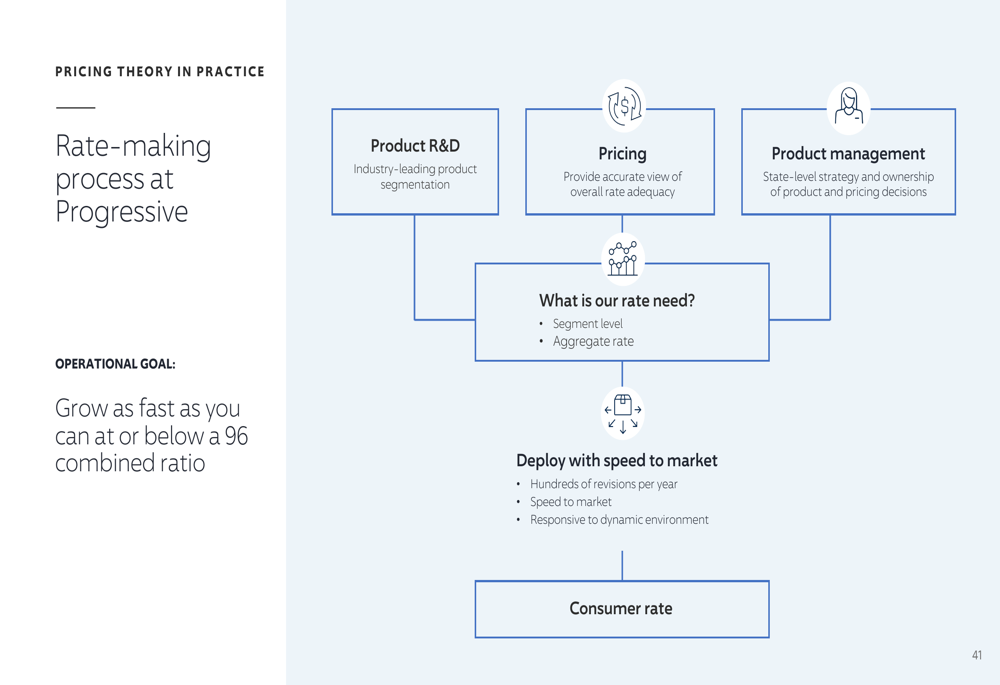
The company’s approach to pricing incorporates multiple factors including loss development, loss adjustment expenses, weather factors, large loss loads, frequency trends, and severity trends. This comprehensive methodology aims to ensure rates are neither excessive nor inadequate while allowing for profitable growth.
Forward-Looking Statements
While the presentation focused primarily on Progressive’s strong performance and pricing methodology, it included the standard safe harbor statements regarding forward-looking information. The company faces several challenges mentioned in the Q1 earnings call but not directly addressed in the Q2 slides, including:
1. Potential tariff impacts on auto parts and repair costs affecting profitability
2. Macroeconomic uncertainties influencing consumer behavior
3. Policy life expectancy challenges impacting long-term revenue
4. Intense competition in the direct-to-consumer auto insurance segment
Despite these challenges, Progressive’s presentation conveyed confidence in its strategy and operational approach. The company’s vision statement reinforces its ambitious goals: "Become consumers’, agents’, and business owners’ #1 destination for insurance and other financial needs."
Analyst Perspectives
According to the Q1 earnings article, Progressive currently appears undervalued based on fair value models, with 12 analysts recently revising earnings expectations upward. The company maintains a "GREAT" financial health score of 3.62/5, with particularly strong performance in profit and price momentum metrics.
The stock’s PEG ratio of 0.37 suggests a reasonable valuation relative to growth, though investors reacted negatively to the Q1 EPS miss despite revenue outperformance. Progressive’s consistent dividend payments for 16 consecutive years provide an additional attraction for income-focused investors.
As Progressive continues to execute its strategy of balancing growth with profitability, investors will be watching closely to see if the company’s significant marketing investments and pricing approach translate into sustained outperformance in an increasingly competitive insurance market.
Full presentation:
This article was generated with the support of AI and reviewed by an editor. For more information see our T&C.
